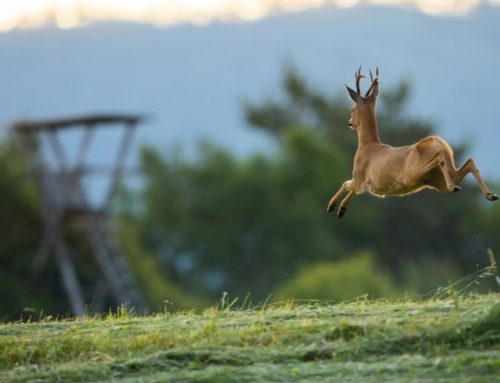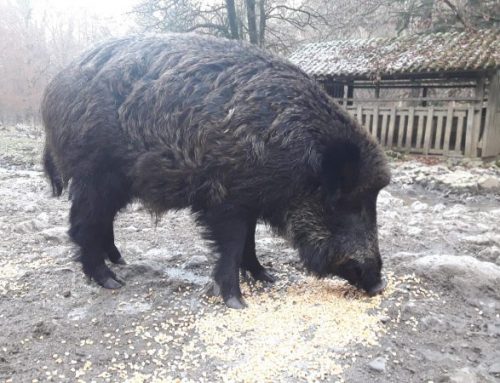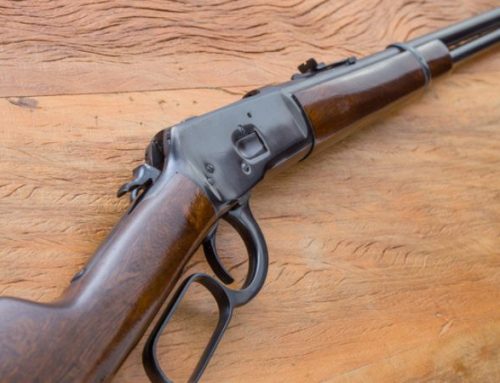A Hunt That Is an Ancient Rite Amid Wind, Silence, and Endless Horizons
There are places in the world where time seems to have forgotten to pass. Stretches of sunbaked land and vast skies, where the scent of wild sage mixes with the warm wind that caresses the golden grass. Places where the setting sun doesn’t just sink—it sets the universe on fire. One of these places is southern Alberta, in Canada. And it is here, in this scene of pure poetry, that one of the most thrilling and ancient hunting rites of North America unfolds: the hunt for the Pronghorn.

But to truly understand this hunt, to experience it in the right spirit, one must go back a long way—to the origins of this extraordinary and unique animal. Because the Pronghorn is not merely a trophy or a hunting challenge: it is a creature that carries the memory of a vanished age.
A Prehistoric Animal: The Last Relic of a Lost World
The Pronghorn (Antilocapra americana) is not a true antelope, despite the name it is commonly known by. In fact, it is the last surviving member of an entirely North American family with ancient origins, dating back millions of years. When mammoths and giant ground sloths roamed these lands, ancestors of the Pronghorn were already running across the prairies of what is now Canada and the United States.
While many species became extinct at the end of the last Ice Age, the Pronghorn survived, evolving to become the fastest land animal in the entire Western Hemisphere. Unlike deer or elk, the Pronghorn was not introduced to Alberta—it is an indigenous species, an ancestral native that has shared in the geological and biological history of these lands.
Its body is a miracle of efficiency: extremely light, with powerful muscles, hard hooves, and a cardiovascular system capable of sustaining speeds up to 100 km/h (62 mph) over long distances. Its horns are unique in the animal kingdom: they are neither true horns nor true bony antlers, but a kind of hybrid, covered in a sheath that regenerates annually.
But it’s not just its form that makes it extraordinary. The Pronghorn has incredibly sharp eyesight, akin to a human looking through 8x binoculars. This makes it one of the most elusive and challenging animals to hunt—in an already complex environment.
Alberta: A Stage of Light and Wind
The hunt for the Pronghorn takes place in the southernmost regions of Alberta, near the border with Montana. Here, the Canadian prairies stretch out like an endless carpet, dotted with small ranches, old windmills, and dusty trails.
Places like Medicine Hat, Manyberries, Walsh, Suffield, and the arid lands of what’s known as Palliser’s Triangle evoke open spaces and boundless skies. In these landscapes, silence is almost absolute, broken only by the rustle of tall grass or the distant cry of a hawk.
The atmosphere is especially magical at dawn, when mist slowly lifts from the undulating land and the first rays of sunlight make the dewdrops sparkle like diamonds. Every corner holds the promise of an encounter: a snowy owl gliding silently overhead, a coyote watching from afar, or the unmistakable silhouette of a Pronghorn outlined against the horizon—always alert, always ready to flee.
A Hunt of Cunning, Patience, and Respect
Hunting the Pronghorn is never easy. The animal’s instincts, the vastness of the terrain, and the lack of forest cover make it one of the most technical and strategic hunts in North America. It is carried out exclusively on foot using the “spot and stalk” method—long-distance glassing with binoculars followed by a careful approach, using every fold of the land to stay out of sight.
There are no blinds, no towers. Success depends entirely on reading the landscape, judging wind direction, and reacting swiftly. Shots are often taken from beyond 200 meters, and every opportunity must be handled with care: one mistake, and the animal vanishes into thin air in seconds.
The hunting season typically begins in early October and ends by mid-month. In Alberta, licenses are issued through a draw system and are highly selective. Each Wildlife Management Unit (WMU) has a limited number of tags, ensuring the sustainable management of the population.
Modern Hunter’s Tools: Cartridges and Rifles
Hunting Pronghorn requires precise rifles and high-velocity calibers. Some of the most commonly used include:
-
6.5 Creedmoor – prized for its accuracy and mild recoil
-
.243 Winchester – ideal for the Pronghorn’s light frame
-
.270 Winchester – a classic, versatile cartridge with a flat trajectory
-
.25-06 Remington – fast, flat-shooting, and excellent for long-range shots
The rifle should be paired with high-quality optics—ballistic reticle, parallax adjustment, and excellent light transmission. A laser rangefinder is essential, as is a good bipod or shooting mat for prone support.
Dressing for the Prairie: Essential and Functional
Prairie days can be deceptive. Temperatures may dip below freezing at dawn, only to rise above 20°C (68°F) by midday. Clothing must be layered, lightweight, and protective:
-
Merino wool or technical moisture-wicking base layer
-
Camo pants—wind-resistant and abrasion-resistant
-
Softshell or lightweight insulated jacket
-
Brimmed cap and light gloves
-
Polarized sunglasses
-
Lightweight but supportive mountain boots
In a compact backpack, don’t forget the essentials: water, topographic maps (or GPS), first aid kit, high-energy snacks, field knife, and game meat bags.
An Experience That Etches the Soul
This is not just a hunt—it’s an immersion into the raw, untamed essence of nature. The vast silence, the sharp wind, the ancient animal with eyes like sentinels of time. Each step on the prairie is a return to something primal, a ritual as old as the land itself. The Pronghorn hunt isn’t just remembered—it’s carried within you.
Hunting Pronghorn in Alberta is not just a technical challenge—it’s an emotional and spiritual experience. When you find yourself alone among the golden waves of the prairie, your heart pounding as you attempt a silent approach, you begin to feel part of a greater balance.
The moment your eyes meet the animal’s is heavy with meaning. It’s not merely about bringing it into range—it’s an encounter between two beings who share the same world, yet live it in opposite ways. The Pronghorn is pure instinct, speed, survival. In that moment, the hunter is called to be honest, swift, and precise. Every mistake is punished. Every success is earned.
And when you finally recover the fallen animal—always with gratitude, always with respect—the silence of the prairie seems to honor that ancient gesture: to take only what is needed, and leave the rest to nature.
The Legacy of the Wind
Pronghorn hunting in Alberta is one of the purest forms of modern hunting. It offers no comfort—but it offers truth. It doesn’t hand out victories—it makes you earn them. And in return, it gives something that lasts forever: a memory etched into the scent of the grass, the sound of the wind, the weight of the animal on your shoulders, and the golden light of a sunset you’ll never forget.
HUNTING TRIP FACT SHEET: PRONGHORN IN ALBERTA
Trip Duration: 3 full hunting days
Location: Canadian prairies – Southern Alberta
Target Species: Antilocapra americana (Pronghorn Antelope)
INCLUDED IN THE PACKAGE
-
3 days of guided hunting
-
Hunting license and 1 tag included
-
All ground transportation during hunting days
-
Full accommodation at hunting camp throughout the trip
-
Trophy fee included
-
Initial trophy preparation for transport
-
Local taxes and fees
NOT INCLUDED
-
Airport transfers to/from Calgary and the base camp
-
Hotel stays in Calgary or Lethbridge before the hunt (if needed)
-
Taxidermy services and skull cleaning
-
Butchering and meat processing
-
Shipping and transport of trophies
-
Notarized invitation letter for visa, if required
-
Rifle rental
-
Tips for guides and local staff
A hunt written in wind, silence, and time—this is Alberta’s gift to those who seek something deeper than just the chase.








